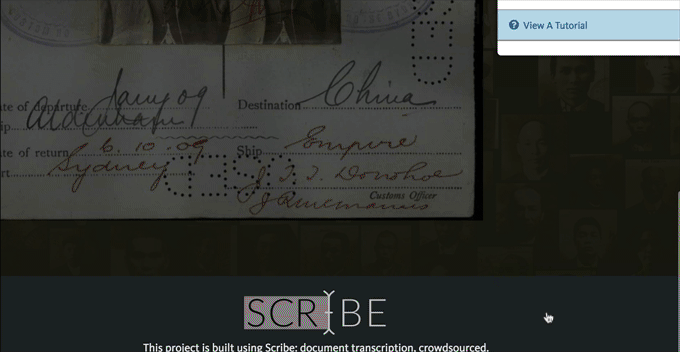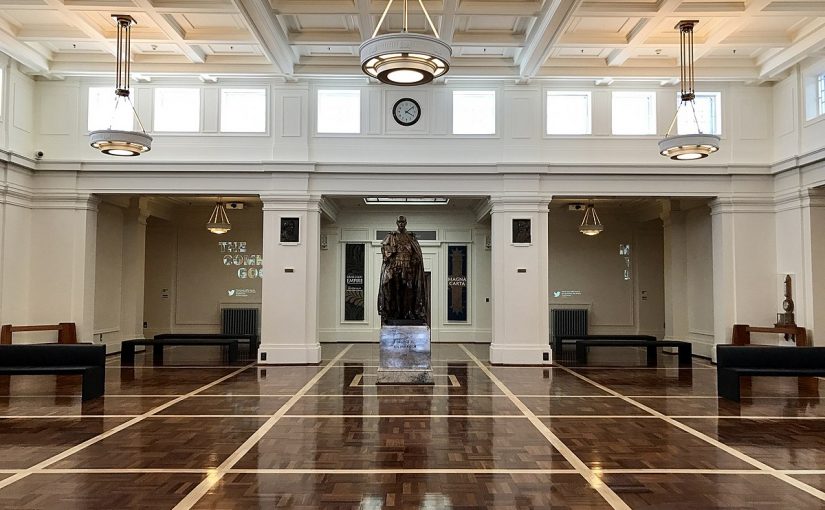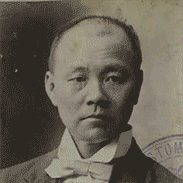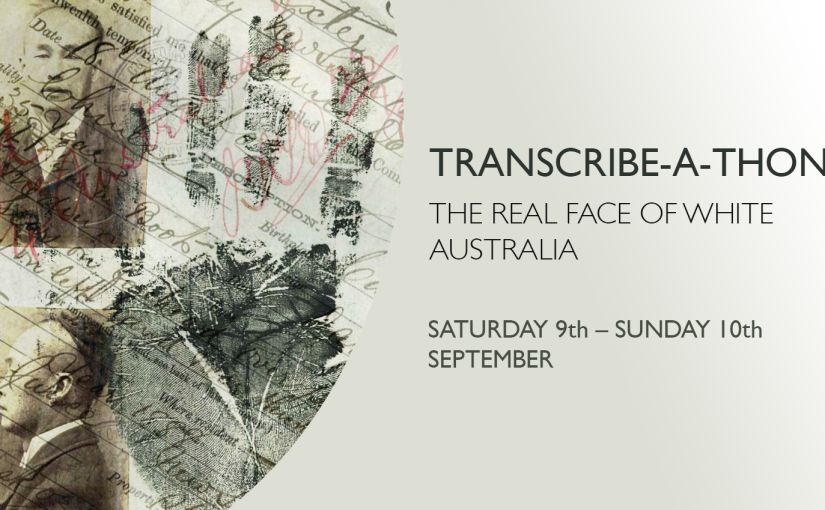Saturday, 9 September
All day, KING’s Hall
Come and try your hand at transcription, or simply find out out more about the project. We’ll be set up in King’s Hall all day, so drop in! There’ll be live updates on the progress of the transcribe-a-thon projected on the walls of King’s Hall. How many documents can we process in a weekend?
Saturday, 11.00am-11.30am, Senate
Sophie Couchman, ‘Chinese in Australia and the making of the mugshot’
Dr Sophie Couchman is a curator and public historian with an Honorary Research Fellowship at La Trobe University. She is interested in the place of migrants in Australia’s history and has researched and published in the field of Chinese Australian history and heritage for many years, including as Curator at the Chinese Museum in Melbourne. Sophie has a particular interest in the creation and circulation of visual representations and how they shape our understandings of Chinese Australians, a topic explored in her PhD research on Chinese and photography in Australia from the 1870s to the 1940s.
Saturday, 12.30-1.00pm, House of Representatives
Kate Bagnall, ‘Women and the records of White Australia’
Dr Kate Bagnall is a Canberra-based historian and writer. She currently holds an ARC DECRA Research Fellowship in the School of Humanities and Social Inquiry at the University of Wollongong, where she is working on a comparative study of Chinese colonial citizenship in Australia, Canada and New Zealand. Kate has published on various aspects of Chinese Australian history, including on the administration of the Immigration Restriction Act and on the archives of White Australia. She is @baibi on Twitter and you can find her blog at www.chineseaustralia.org.
Saturday, 3.00-3.30pm, Senate
Peter Prince, ‘White Queensland: bananas, aliens and dictation’
Dr Peter Prince has spent the last 15 years working on ‘aliens’, much to the amusement of his children. He published a series of papers for the Commonwealth Parliamentary library on the subject and in 2016 completed a PhD thesis with the ANU College of Law on use of the word ‘alien’ as a key language tool in the creation of a ‘White Australia’. He has worked for Defence and the DFAT and is currently a lawyer with the Department of Health, working mainly in the aged care area.
Sunday, 10 September
All day, KING’s Hall
Come and try your hand at transcription, or simply find out out more about the project. We’ll be set up in King’s Hall all day, so drop in! There’ll be live updates on the progress of the transcribe-a-thon projected on the walls of King’s Hall. How many documents can we process in a weekend?
Sunday, All MORNING, KING’s Hall
Chinese Family History Drop-in
Come and chat with our Chinese family history experts Kate Bagnall and Sophie Couchman.
Sunday, 12.30-1.00pm, House of Representatives
Lisa Russ, ‘The six degrees of fingerprints: Leave your fingerprint!’
Lisa Russ is currently a Bachelor of Heritage, Museums and Conservation student at the University of Canberra. She has lived in Canada, the United Kingdom, and now calls Australia home. Transcribing and analysing Series ST84/1 documents, many of which have handprints, inspires Lisa to talk about the power of fingerprints.
Sunday, 3.00-3.30pm, Senate
Tim Sherratt, ‘Mobilising the digital: A live experiment in meaning, place, and history’
Dr Tim Sherratt is a historian and hacker who researches the possibilities and politics of digital cultural collections. He’s worked across the cultural heritage sector and has been developing online resources relating to libraries, archives, museums and history since 1993. Tim’s tools and experiments include important things like The Real Face of White Australia, useful things like QueryPic, and weird things like the Vintage Face Depot. He’s currently Associate Professor of Digital Heritage at the University of Canberra. You can find him at timsherratt.org or as @wragge on Twitter.
Photograph of King’s Hall by Kgbo – Own work, CC BY-SA 4.0, Link








